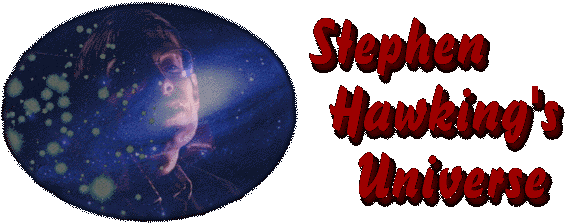 | ||
| PROGRAMME
2, "IN THE BEGINNING" UK Air Date (BBC 2): September 7th at 7.45pm, US Airdate (PBS): October 20th at 9pm | ||

Our sun at the centre of our solar system is just one star among billions in the Milky Way galaxy. Around us are billions and billions of other galaxies. Where could this entire universe have come from? Was it always this way or did the universe have a beginning? In the early days of this century, there were two entrenched views on the history of the universe. The Church preached that there had been a moment of creation - a time when the universe began. This notion was incredible to scientists. That was until Albert Einstein and his radical theory of general relativity, that suggested that the universe was expanding. At first Einstein wouldn't believe the results of his own maths, even when it was pointed out to him by a Catholic priest, Georges Lemaitre. George Lemaitre took things one step further and came up with the idea that if the universe was expanding, it could have started as something infinitesimally small and then grown to its present size. This was the seed of the idea of the Big Bang. An idea that Einstein eventually came around to once telescopes revealed that all the galaxies were actually moving apart. Such an amazing idea, that the universe could have expanded from one tiny point, was not accepted by everyone. A radical group of cosmologists at Cambridge, led by Fred Hoyle, came up with the steady state theory. This said that there had been no Big Bang and that the universe had always been roughly the size it is now, but that new matter was spontaneously being created all the time and that this was the reason that the universe was expanding. As proof for their theory they had to find a place in the universe where all the elements were formed. The steady state scientists made the brilliant discovery that the intensely hot conditions in the inside of stars formed all the elements that now make up our planet and even ourselves. However, stars start with the basic fuel of hydrogen. It seemed as if the Big Bang would be the only place hot enough to have formed hydrogen, was this the first piece of evidence for how the universe formed? Another piece of evidence that could clinch the theory was the discovery of left over radiation from the Big Bang. Although this would now be very cold, this radiation should fill all of space. In 1964, a university team in America set up a careful experiment to look for the left over radiation from the Big Bang, but they were beaten to the discovery by a chance finding by a couple of young radio astronomers working at Bell Laboratories only 35 miles away. The evidence was building for the Big Bang theory. At this time Stephen Hawking was entering Cambridge to start his Phd. He had decided to study the early conditions of the universe. In his theses he came up with a theory for how the whole universe might have been created from one tiny point. The proof that clinched the Big Bang theory for scientists came in 1992. COBE, the first ever cosmological satellite took a picture of the radiation from the Big Bang that showed evidence for how the first galaxies formed. In this century, science has come to understand how the universe began from a tiny point, fifteen billion years ago. No matter how incrdible it sounds, it seems that the Church's ideas of a moment of creation were right from the beginning.  | ||
|